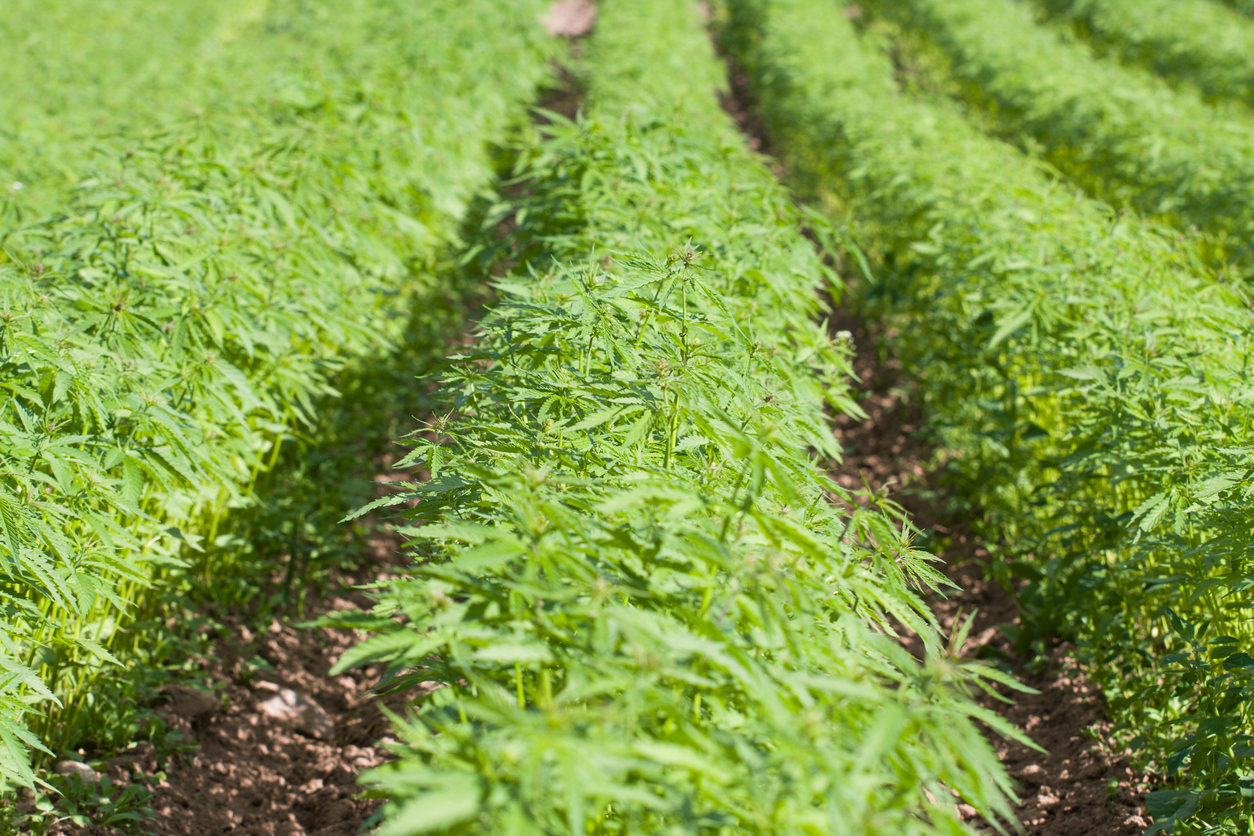So you’re thinking about investing in agriculture with Harvest Returns? Good choice -- investments in agriculture provide a hedge against inflation with little to no correlation to the overall stock market, and can be an attractive diversification tool for a portfolio. The universe of agriculture investment varies widely, with various crop types, growing methods, and offering structures, each with their own risk/return profile. Take a look at the simple steps below to get started. We are more than happy to aid you in your endeavors. But first, here’s a little bit about us.
Read moreTop 5 Mistakes Farmers Make When Raising Capital for Their Operation
The first question most farmers and producers who plan on starting a new operation or expanding their current one ask themselves is, “Where am I going to get the money?” For some of them, driving down to their local ag credit union will suffice. But others who may be thinking on a larger scale might consider raising capital with outside investors. For those, we offer a list of commonly seen mistakes.
Read moreMust Watch Farmland Investing Trends
When it comes to investing, one of the most valuable skills you can have is being able to identify trends and capitalize on them.
For example, those who caught the trend of online shopping and e-commerce have done quite well with stocks like Amazon. On the other hand, those who had their heads in the sand did not do too well if they owned retail stocks, such as Macy’s.
Farmland hasn’t quite become trendy yet, but it is growing in popularity. It has transitioned from an investment that was out of reach to something you can now own with relative ease. All without getting your boots dirty.
Before diving in, it is important to understand the current trends within an investment. Based on a report by Farm Foundation, here are the most important trends farmland investors need to be aware of.
Read moreThe ‘Cherry on Top’ for A Diversified Portfolio
Sweet, tangy and globally enjoyed, cherries have earned and proven their spot on consumers’ shopping lists, in our foods, and potentially, in your investment portfolio.
According to Transparency Market Research (TMR), the global fresh cherries market value is anticipated to reach $ 107.2 billion by 2029 at a CAGR of 8.5%, making cherries an investable asset worthy of consideration.
Read moreMicroalgae - The Next Wave in Alternative Protein Investment
The alternative protein market has been a darling of investors the past few years, with most of the capital flowing into start-ups related to plant-based protein. However, a photosynthetic single cell cyanobacteria, commonly referred to as blue-green or microalgae, could drive the next wave of investments in alternative proteins.
Read more4 Reasons to Invest in Regenerative Agriculture
As agriculturalists and scientists seek solutions to the growing demand for sustainable agriculture products, many look to regenerative agriculture. Regenerative agriculture is a practice that involves enhancing the natural resource base and environment, while still producing sufficient amounts of high-quality food and being financially viable and safe for farmers and their communities. Regenerative cropping and farming practices aim to rebuild organic soil matter, resulting in a variety of environmental benefits, including improved soil biodiversity and reduced climate change. Regenerative agriculture also improves the sanitation of water and has proved to be a financially sound practice for farmers worldwide. The closed-loop system is thought to reduce humans’ impact on the environment and reverse damage.
Read moreHydroponics: From Farm to Fork
Hydroponics can rapidly help serve unmet demands for fresh organic vegetables, grown close to their market. Though limited by volume, growing food in hydroponic greenhouses has many advantages. Because the greenhouse's temperature and inputs can be precisely controlled, plants grow faster and face fewer diseases than their counter-parts outside in soil. A closed-loop irrigation system results in major water savings and uses less fertilizer, while not introducing pollutants into groundwater and soil. These greenhouses can be adapted to many different crops, and facilitate ease of rotation, which enable the farmers to more quickly react to changing consumer demand. Finally, growing hydroponic vegetables closer to consumers will help reverse the trend of foreign produce imports and transporting food across the oceans.
Read moreHow Growing Health Trends Can Change the Landscape of Agriculture
Consumer demands have rapidly changed in the past few years – something that is most apparent in the food and agriculture industry.
Numerous factors have impacted the current shift in agricultural production, including boosted efficiency and new regulations. However, a landmark study by the International Institute for Applied Systems Analysis found that beyond these two factors, changing consumption patterns will determine the future landscape of agriculture.
Today, consumers are willing to pay a premium for their health and the agricultural supply chain is heeding their call. As grocery stores, fresh markets, and food companies change their approach to meet the demands of health-savvy consumers, so too will the farms that supply them.
Here are four growing health trends you should watch out for.
Protect Your Portfolio from Market Volatility with Agriculture
The Coronavirus scare has taken a toll on the stock market as of late. Much of the volatility in the market is driven by “program trading,” or machine-driven stock selling and buying. Markets these days are increasingly driven by algorithms, instead of human traders.
Thousand point daily swings may work to Wall Street traders’ advantage, but to the average American with retirement savings, they can be a cause for anxiety and concern. Because so much money is locked up in Exchange Traded Funds and index funds, this volatility is magnified for most investors. The CBOE Volatility Index, or VIX as its known, has spike tremendously in the past week.
Read moreInvesting in Agriculture vs. Investing in Stocks
The stock market is where most investors invest the majority of their money, but is that really the safest place for it? Some analysts have called the current investing environment “the everything bubble” and are predicting that the next financial crisis could eclipse the one of 2007-2008. Lofty equity valuations along with continued low yields have driven more and more people towards alternative investments to protect and grow their wealth. Commercial real estate, precious metals, oil, and gas are well known alternative asset classes; agriculture is somewhat lesser known, but nonetheless important to consider. How do agricultural investments stack up against investments in more traditional stocks?
Read moreAustralian Sheep Production for Global Consumption
The production of sheep for meat is widely distributed throughout the world. While China dominates the market in sheep consumption, they’re also the world’s largest importer. The global export market is very concentrated compared to production. Australia accounts for 8% of global sheep production, and acts as the world’s largest exporter with 34% of the market, according to the World Sheep Market to 2025 report.
Read more3 Reasons Why Women Could Make Great Agriculture Investors
There seems to be a lack of talk about women in investing roles. It is easy to find articles about how to become the next Warren Buffett or Peter Lynch, but what about being the next Geraldine Weiss or Barbara Corcoran? On another note, there's also a lack of talk about women farmers and ranchers. 30% of U.S. farmers are women, yet the face of farming is typically that of a man. Now is the time for these two industries to pair together to build powerhouse investors and agriculturalists. Here are 3 reasons why women could make great agriculture investors:
Read moreTop 5 Agriculture Investments to Watch in 2020
We expect 2020 to be another exciting and dynamic year for investments in production agriculture. One of the ways to understand momentum behind agriculture investment is to examine consumer food preferences. According to Nielson’s recent “How America Will Eat” report, sales growth during the last year for fresh foods has increased $4.6 billion, organics is up more than $925 million, and plant-based foods has grown to $982 million. Social and health conscious younger generations are increasingly concerned with all aspects of the food they eat to include how, where, and by whom it is grown. Based on these developments, we’ve developed the top five investment trends to watch in 2020.
Read moreQuitting Beef to Save the Climate? Unnecessary.
We’ve seen a large number of inaccurate and sensational headlines on the sustainability of cattle production. Many people are trying plant-based diets simply because they believe that eating meat is bad for the environment. Diana Rodgers of Sustainable Dish provided the infographic below with a great explanation of cattle carbon cycling vs. fossil fuels that dispels these myths.
Read moreLavender: Low Maintenance, High Returns
In correlation with consumer demand for natural ingredients, lavender is a high value, low maintenance plant with a great return on investment. There are many uses for this perennial crop, making lavender easy to sell. The only problem with today’s lavender market — demand is outpacing supply.
Read moreThree Ways to a Successful Investment Exit
Entering a new investment can be exciting. But it is just as important to understand how and when that investment will successfully end. Investors in private equity and venture capitalist are especially concerned about how they will exit an investment and recognize their gains. Because they invest in private, untraded companies, departing an investment is not as simple as hitting the sell button on a publicly-traded stock on a discount brokerage. Private placements are generally illiquid investments, and agriculture is most suited for those with long term investment horizons. That said, investments in farming don’t have to be set up in perpetuity. Harvest Returns equity investments generally are structured with one of three exit strategies:
Read more4 Reasons to Invest in Hemp
If you haven’t heard about the rise of the hemp economy you may have been living under a rock. Consumers of all types are driving up demand so now is the time to consider investments in the production and processing of hemp into CBD oil.
Read moreAgriculture & America's Rural Economy
Agriculture has long ceased to be considered the major economic sector. A large portion of the rural economy in the U.S. depends on agriculture. The 46.1 million people in rural America account for 72% of total land occupancy in the country, representing 14% of the total population. U.S agriculture practices are among the most fruitful and safe in the world, and in the past 30 years agricultural productivity has increased by 50%.
Read moreGrowing the U.S. Bamboo Investment Market
Bamboo is a strong and fast-growing material that’s been used for thousands of years because of its versatility and sustainability. The bamboo plant is a grass that grows almost a meter a day. After the first three years of growth, it is harvested annually without the need of replanting. Bamboo is a flexible resource that can grow under a range of climatic conditions while keeping the land nutrient and preventing soil erosion. Unlike other plants, bamboo is naturally antibacterial and has no need for pesticides or fertilizers. With more than 1,500 potential product uses, the miracle grass also represents a lucrative market opportunity.
Read moreInvesting in Hemp, the Versatile Cash Crop
CBD and hemp products have both seen a boom since the 2018 Farm Bill was signed into law, with hemp legalization on a federal level and the ability to sell products commercially. Many items made from hemp have been marketed since then, with CBD oil being in top demand. As more studies explore the use of CBD, many people are looking to the product as a medicine for various ailments or illnesses. Hemp fibers are also making a recent impact as well.
Although it was legal to grow hemp since 1998, producers were required to receive a special production permit from the Drug Enforcement Agency due to its relation to marijuana. However, now there are fewer restraints of transportation on the plant and less risk for farmers and producers involved.
Read more



















